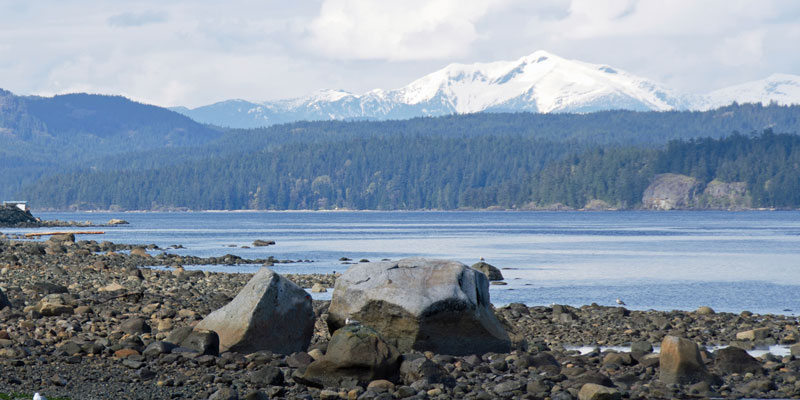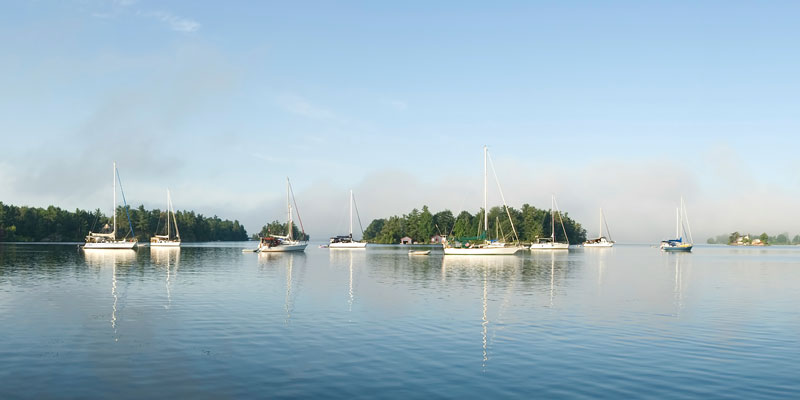Priority Toxic Elements (Vanadium, Antimony and Arsenic) – Source Water Protection and Drinking Water Treatment
Principal Investigator - X. Chris Le, Professor and Canada Research Chair in Bioanalytical Technology and Environmental Health, , 2008 - 2012

Challenge
Arsenic and vanadium greatly affect both human and ecological health – more than 100 million people worldwide are affected by arsenic in their drinking water, and previous data suggests that several rural areas in Canada have levels of well water arsenic exceeding the current Canadian guidelines. Many homes install treatment devices, however prior to this project, it had not been determined how effective these devices are at removing arsenic. In addition, impacts from high concentrations of arsenic and vanadium on the ecosystem are unclear. Arsenic and vanadium can be released from mining and oilsands operations, but the uptake and toxicity of these elements to aquatic organisms is not well understood.
The objectives of this project, led by Dr. X. Chris Le, were to: 1) Identify the concentrations and chemical species of arsenic in well water, and the effectiveness of home treatment devices in removing arsenic; 2) Identify the impacts of the Quinsam Mine, British Columbia on the local aquatic system; 3) Identify the chemical species (forms) of vanadium in oil sands process-affected water, and the toxicities of these forms of vanadium to aquatic organisms.
Project
Reducing exposure to arsenic from drinking water is key in areas where well water exceeds the current guidelines. In this study, researchers first determined arsenic concentrations in well water in individual homes, by analyzing untreated and treated water samples in pairs from more than 600 wells with information on home treatment devices. They compared the concentrations of arsenic species in water before and after the treatment to gain information on the effectiveness of the various treatment methods used in households. The team then offered advice on removing arsenic from the well water.
The team’s analyses indicated that many treatment methods did not remove arsenic species from well water to meet the Health Canada and World Health Organization guidelines. For example, although iron filters were used by many home owners, the efficiency of removing arsenic from their well water was not consistent. Thirteen out of 51 homes that used iron filters had water arsenic concentrations exceeding the Health Canada and World Health Organization guideline level of 10 µg/L. When maintained properly, reverse osmosis appears to be able to remove arsenic from most well water tested, to meet the Health Canada and World Health Organization guidelines.
The second major component of this research focused on understanding the environmental fate and potential impact of vanadium. The team determined two main forms of vanadium (V+4 and V+5) in the oil sands process water, by-product coke, and sediment. The team then examined aquatic toxicity of these by growing the benthic invertebrate Hyalella azteca in water that was supplemented with vanadium (V+4 and V+5). The organisms showed dose-dependent uptake of vanadium, and further studies focus on determining toxicity of vanadium to the organisms. An understanding of the bioaccumulation and toxicity of different forms of vanadium will contribute to meaningful environmental impact assessments.
Outputs
- Development of predictive mortality models based on vanadium bioaccumulation and vanadium water concentration. The predictive mortality models were developed in conjunction with end users in Environment Canada. Environment Canada is using the models in the assessment of contaminated sites.
- Participation in several key end-user oriented meetings and workshops:
- Canadian Water Network Oil sands annual meetings at the University of Waterloo (2012, 2011)
- Canadian Water Network annual meetings, 2011 and 2012.
- 95th Canadian Society for Chemistry Conference and Exhibition, Metals in the Environment Symposium. Calgary May 2012. End users from Environment Canada and Natural Resources Canada participated.
- Alberta Water Research Institute annual meetings. 2009, 2010, 2011 and 2012.
- Technical Advisory Committee meeting. Alberta Health and Wellness, Alberta Environment, 2011 and 2012
- External Advisory Board meeting, Columbia University Superfund Project. New York. Spring 2011.
- Water, Toxic Substances, and Human Health Workshop. State Key Laboratory of Environmental Chemistry and Eco-toxicology, Chinese Academy of Sciences, Beijing, May 2011.
- Several scholarly articles and end-user reports:
- McGuigan, C.F. et al. A review on arsenic concentrations in Canadian drinking water. Environmental Review, 18, 291-307 (2010).
- McKnight-Whitford, A. et al. New method and detection of high concentrations of monomethylarsonous acid detected in contaminated groundwater. Environmental Science and Technology, 44, 5875-5880 (2010).
- Liu, F. et al. Antimony speciation and contamination of waters in the Xikuangshan antimony mining and smelting area, China. Environmental and Geochemical Health, 32, 401-413 (2010).
- Naranmandura, H. et al. Comparative toxicity of arsenic metabolites in human bladder cancer EJ-1 cells. Chemical Research in Toxicology, 24, 1586-1596 (2011).
- Chen, B. et al. Mouse arsenic (+3 oxidation state) methyltransferase genotype affects metabolism and tissue dosimetry of arsenicals after arsenite administration in drinking water. Toxicological Science, 124, 320-326 (2011).
- Shen, S. et al. Arsenic binding to proteins. Chemical Reviews, 113, 7769-7792 (2013).
- Jensen-Fontaine, M. et al. Uptake and speciation of vanadium in the benthic invertebrate Hyalella Azteca. Environmental Science and Technology, 2013. DOI: 10/1021/es403252k.
- Normandin, L. et al. Biomarkers of arsenic exposure and effects in a Canadian rural population exposed through groundwater consumption. Journal of Exposure Science and Environmental Epidemiology, 2013. DOI: 10.1038/jes.2013.80.
Outcomes
- Several public meetings were held in Campbell River, B.C. The Campbell River Environmental Committee, the City of Campbell River, and the Strathcona Regional District representative have all voiced concerns about the proposed mine expansion. Campbell River Environment Committee and Citizens group have written thanks for supporting the project, and the work has been mentioned in newspapers over 10 times. For example the work has been covered by Reporter Paul Rudan of The Mirror Newspaper, Campbell River.
- The mine has responded to the 2010 report by modifying its expansion plans.
- The work on effectiveness of arsenic treatment methods has been of interest to partners; Alberta Health and Wellness has requested a copy, and the work has also been shared with Alberta Environment and Alberta Health Services.
- The team’s work on the Quinsam watershed has helped understanding the potential impact of Quinsam mine on the aquatic system. This has led to the mine to re-evaluate their expansion plans in light of the results.




